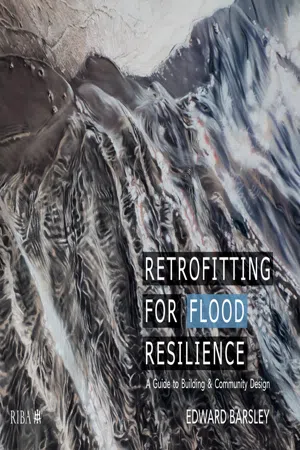
Retrofitting for Flood Resilience
A Guide to Building & Community Design
- 344 pages
- English
- PDF
- Available on iOS & Android
Retrofitting for Flood Resilience
A Guide to Building & Community Design
About This Book
This book educates and introduce readers to the ways in which we can adapt to the threat of flooding throughout the built and natural environment. It offers advice on how to better understand the nature of flood risk, whilst highlighting the key approaches and principles necessary for developing community and property-level flood resilience. As a comprehensive and practical manual, this book includes richly illustrated diagrams on a variety of concepts and strategies to use when designing for flood resilience. It is vital resource for anyone looking to adapt to the threat of flood risk. Highly practical handbook for architects, students, engineers, urban planners and other built environment professionals Richly illustrated with practical examples and case studies Draws on research with the Cabinet Office, Environment Agency & Local Community as well as input from academic and industry experts, homeowners and residents of communities at risk of flooding.
Frequently asked questions
Information
Table of contents
- Cover
- Half Title
- Title
- Copyright
- Contents
- ABOUT THE AUTHOR
- PREFACE
- FOREWORD
- EIGHT PERSPECTIVES
- 01 FLOOD RISK CONTEXTS AND CONSEQUENCES
- 02 TYPES OF FLOOD RISK
- 03 TOOLS AND TECHNIQUES FOR UNDERSTANDING FLOOD RISK
- 04 CATCHMENT AND COMMUNITY FLOOD RISK MANAGEMENT
- 05 BUILDING-LEVEL STRATEGIES
- 06 PATHWAYS TO A FLOOD-RESILIENT FUTURE
- APPENDIX
- FURTHER LINKS
- REFERENCES
- INDEX
- IMAGE CREDITS